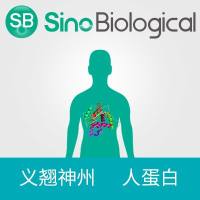Evaluation of Rotavirus Vaccines in Small Animal Models
互联网
506
The high morbidity and mortality of rotavirus (RV) infections has spurred the development of RV vaccines (1 –13 ). Although children naturally infected with RV commonly undergo multiple infections, primary infections in children generally induce disease, and children are normally protected against severe disease during subsequent infections (1 ,2 ,6 –8 ,14 ). For RV, the immunologic mechanisms responsible for protection are poorly understood, but antibody (Ab) in the intestine appears to be the primary mechanism of protection (2 ,15 ,16 ). Because RV is a localized enteric infection, and induction of intestinal mucosal immune responses was expected to be required for protection, live orally administered vaccines were pursued first. Vaccine development of the live attenuated vaccines proceeded to clinical trials in humans without prior animal testing. In August 1998, Rotashield™, a three dose, live attenuated tetravalent (TV), rhesus rotavirus (RRV) vaccine produced by Wyeth Lederle Vaccines and Pediatrics (West Henrietta, NY), was licensed. This vaccine shows promise, eliciting ∼80% protection against severe disease (6 ,7 ,12 ,17 –19 ). The recent detection or emergence of new RV serotypes in humans suggests that incorporation of additional P-and G-serotypes into this vaccine may be necessary in the future (20 –22 ). Additional concerns with the use of live attenuated vaccines include interference of vaccine replication by other enteric pathogens (common in children from the underdeveloped world); neutralization by maternal Ab; limited replication competence of animal strains, because of the host range restriction observed with RVs; and safety, because of the possibility of producing new virulent virus, emerging by reassortment of circulating wild-type (WT) virus with the vaccine virus.
Development and testing of nonreplicating RV vaccines have also been pursued, and will be the focus of this chapter. The use of nonreplicating immunogens presents additional challenges beyond that of developing RV vaccines effective in young children against potential infection by multiple serotypes of RV. The nonreplicating immunogen must be able to induce protective immune responses against the target virus. Traditionally, nonreplicating vaccines have been thought to be poor inducers of mucosal immune responses and protection of the mucosa. Without amplification of the vaccine virus by replication, a high dose of nonreplicating immunogen may be required. To enhance the immune response to nonreplicating immunogens, development and testing of new adjuvants and/or delivery systems, and alternative routes of immunization to boost immunogenicity and protective efficacy, are needed. If administered orally, the nonreplicating immunogens must be stable in the digestive environments of the stomach and intestine.







